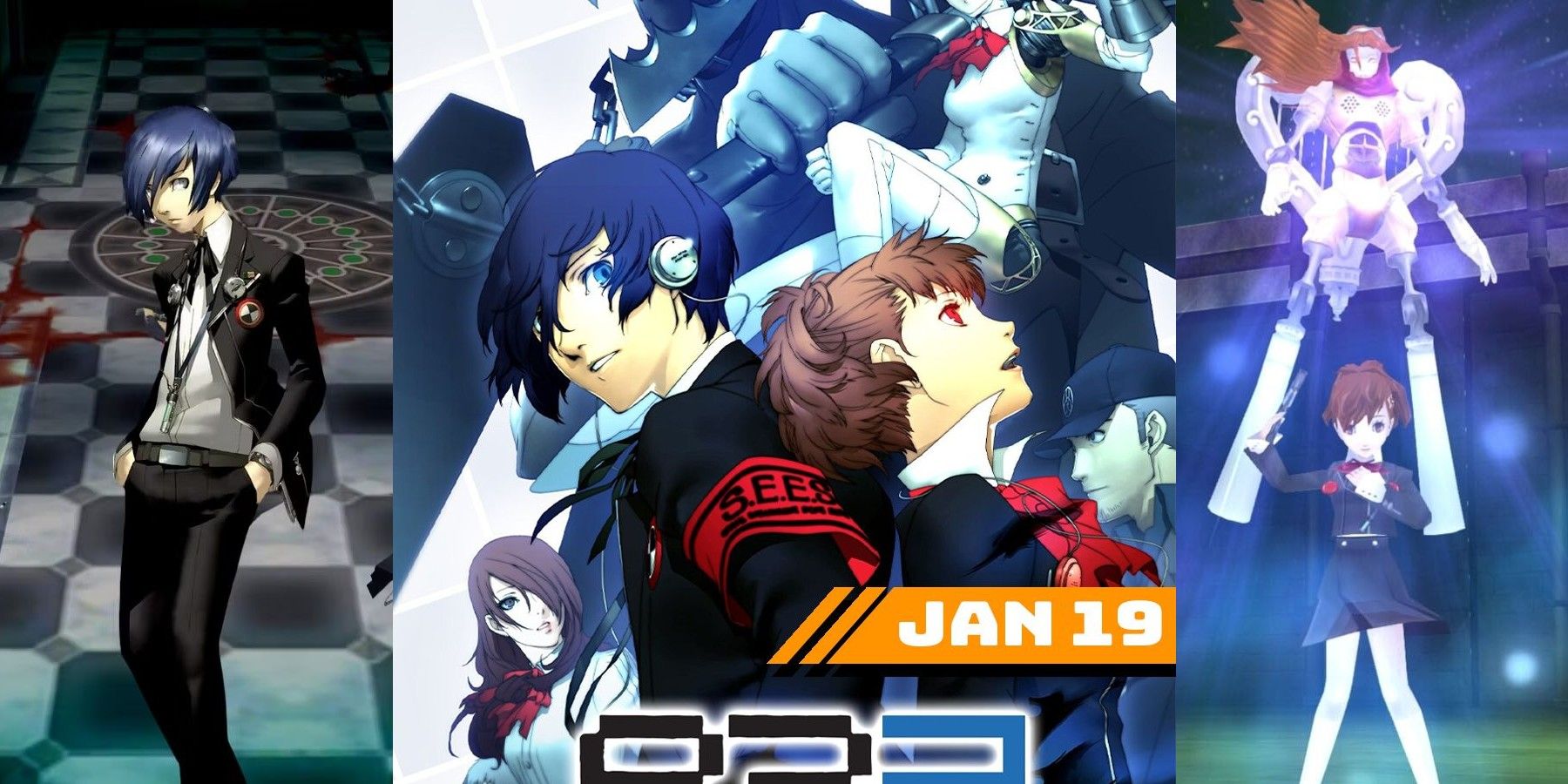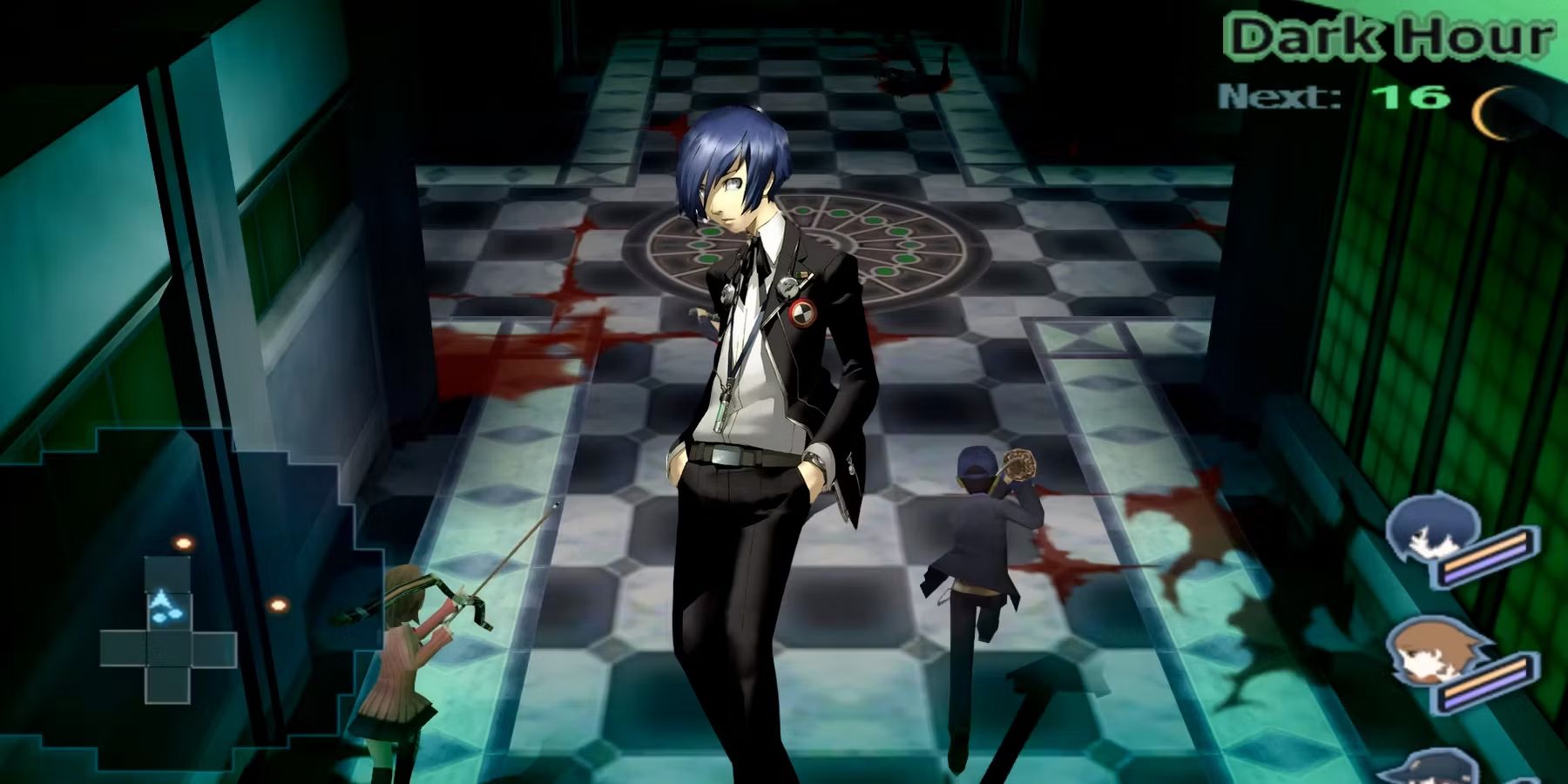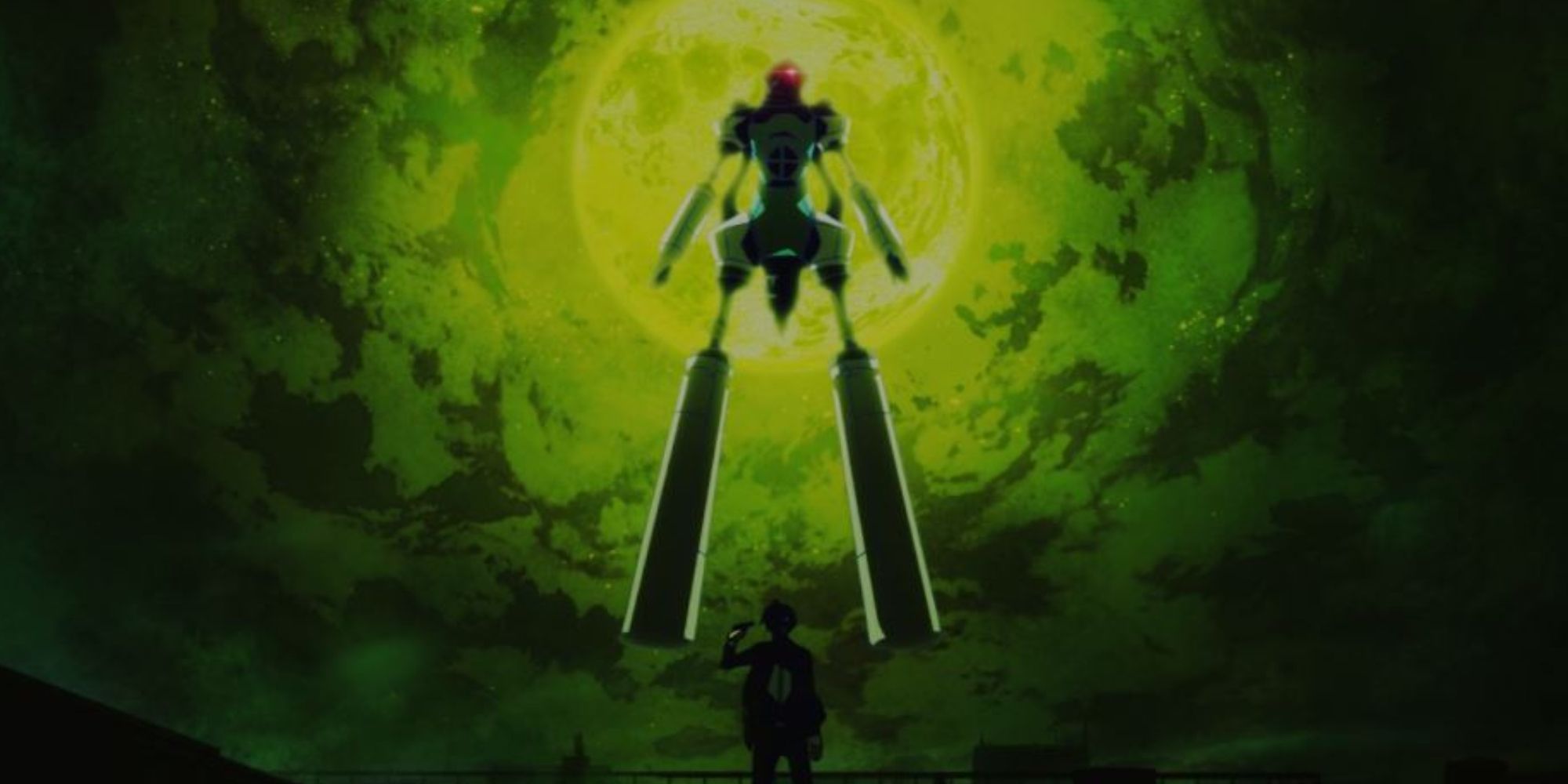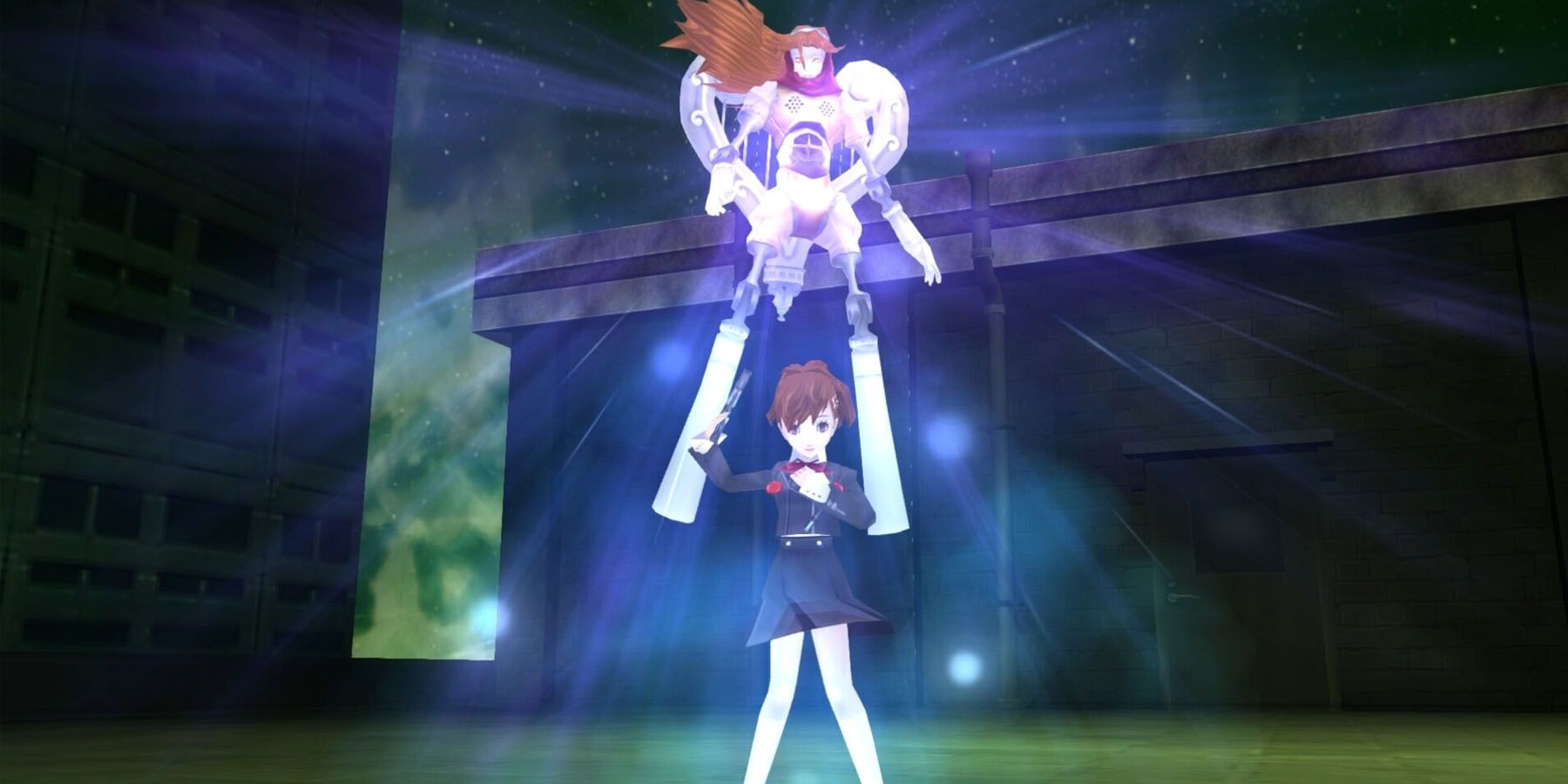Persona 3 was the first Persona game to introduce many elements that are now considered core components of the series as a whole, such as the daily life simulation elements, Social Links (called Confidants in Persona 5), and a central dungeon that is revisited frequently throughout the game (Tartarus).
Persona 3 also has three different versions which have been released over the years, consisting of the original Persona 3, the enhanced version known as Persona 3 FES, and the portable console version called Persona 3 Portable. These versions have a number of differences between them which make them worth trying out for different reasons, and this guide will cover these differences in detail.
Persona 3
This is the original release of the game and is the base version which all future versions were built on. Anything found in Persona 3 can also be found in FES, and Portable also contains almost everything found in Persona 3, excluding the 3D explorable environments during daytime sequences and the fully animated cutscenes. This version of the game was released for the Playstation 2 exclusively and remains exclusive to that platform at the time of writing.
Persona 3 FES
This was an enhanced rerelease of Persona 3, also released for the Playstation 2. In addition to all the content from the original game, it most notably adds an entire playable epilogue starring Aigis as the player character. This consists of a huge new dungeon called the "Abyss of Time", and clarifies several lingering plot threads from the conclusion of the original game. "The Journey" is the name given to the main story of the original game in this version, whilst the playable epilogue dungeon is called "The Answer" and can be accessed from the main menu at any time.
It also adds a number of less obvious changes and additional content, which can be found scattered throughout the original game's story. This includes the ability to take Koromaru on walks to gain random items or get a boost to a Social Link, the ability to view secret videos of the protagonist's dorm mates from the control room, the addition of a hard mode, and a number of new quests to complete. It also overhauls the Naganaki Shrine, allowing players to use it to alter various properties of Tartarus for their next visit, adds several new fusable Personas, adds an extra scene involving a certain character, and adds new wearable costumes.
It also makes some other balance and gameplay adjustments, mainly involving Persona stats, skillsets, and when certain Social Links can be accessed.
Persona 3 Portable
Persona 3 Portable was released for the PSP and served as a portable version of the game, released after Persona 4 and featuring a number of Quality of Life improvements found in that game.
Of the three versions, Persona 3 Portable arguably has the most obvious differences from the other versions, removing both the fully animated cutscenes and the explorable 3D environments in the city and the school. In exchange, it adds an entire second story mode with a female protagonist, which features several new Social Links, new and altered dialog, and several new ending scenes relating to social links that can be accessed on NG+. In addition to the new protagonist, an alternate Velvet Room attendant named "Theodore" is added to the game and can be selected when speaking to Igor early in the game.
While it lacks "The Answer", the Portable version does have its own bonus area reminiscent of the Abyss of Time. This area called the "Desert of Doors" is occupied by Margaret from Persona 4 and allows players to fight harder versions of nearly all the Full Moon Bosses, take on some other challenge battles, and even fight Margaret as a bonus boss after completing all of them.
Portable also adds two additional difficulties, a "Beginner" mode, and the ultra-hard "Maniac" mode. Additionally, unlike the previous two versions, this version allows players to set their party tactics to "Direct", allowing them to directly command their party members in combat rather than relying on the whims of the AI. Party members that are knocked down can now act as soon as they get back up without wasting a turn just getting back up, Co-op attacks can now be performed by allies after a weakness is struck, or a critical hit landed, and Fusion Spells are now items gained by trading gems at the Antique Shop. Allies can take fatal blows for the Protagonist, and the Dizzy Status effect has been added.
Finally, there are a number of general changes made to the gameplay. Returning to the Tartarus Lobby no longer fully restores the Party, requiring a fee to be paid based on several factors including the in-game date and any status effects party members are suffering from. Floors can be directly returned to from the Tartarus Entrance, and the "Tired" status effect is only applied after leaving Tartarus, rather than when returning to the entrance (Also, if a character has the "Great" status, they will only be downgraded to "Good" instead of becoming "Tired.") Finally, Party Member equipment can be directly accessed and changed from the menu, instead of requiring players to speak to party members individually to change their gear.
Version Differences Table
|
Version/Feature |
Persona 3 |
Persona 3 FES |
Persona 3 Portable |
|
Base Story: The Journey |
Yes |
Yes |
Yes |
|
Playable Epilogue: The Answer |
No |
Yes |
No |
|
Female Protagonist Option (& Alternate Social Links) |
No |
No |
Yes |
|
Controllable Party Members |
No |
No |
Yes |
|
Hard Mode |
No |
Yes |
Yes |
|
Beginner Mode & Maniac Mode |
No |
No |
Yes |
|
Theodore |
No |
No |
Yes |
|
Desert of Doors with Bonus Boss Fights (& Margeret) |
No |
No |
Yes |
|
Fully animated Cutscenes |
Yes |
Yes |
No |
|
3D Environment Exploration in the City and School |
Yes |
Yes |
No |
Which Version is Getting Rereleased?
The version being used in the rerelease for PS4, PC, Xbox One, Xbox Series X/S, and Nintendo Switch is the Portable version.
Persona 3 is available for PS2, PSP, and PS Vita, and releases on January 19th 2023 for PS4, PC, Xbox One, Xbox Series X/S, and Nintendo Switch.




